
Curculionoidea
Weevils
The weevils are almost exclusively plant-eaters, and, with over 60000 species, is the largest beetle family in the world.

Acorn Weevil (Curculio venosus) - Cheshire, England - May 2009
They can roughly be split into two groups based on their antenna structure. These are the Primitive Weevils (Orthoceri) which have straight antennae and the True Weevils (Curculionidae) which have a bend in the antenna after the scape (an elongated first antennal segment). The "elbowed" or "geniculate" antennae are clearly illustrated in the photos of the Acorn Weevil above and below.
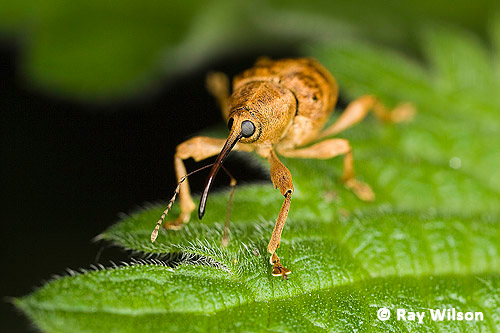
Acorn Weevil (Curculio venosus) - Cheshire, England - May 2009
Most weevils are instantly recognisable as belonging to this family due to their very distinctively elongated head, with the jaws being located at the end of a long rostrum. Coupled with large circular eyes, it gives many weevils an almost cartoonish appearance.

Acorn Weevil (Curculio venosus) - Cheshire, England - May 2009
Not all weevils have long, elongated rostrums and there are many species with short, broad snouts, such as the Nettle weevil below. This species is found abundantly throughout the UK on Stinging Nettles (Urtica dioica).
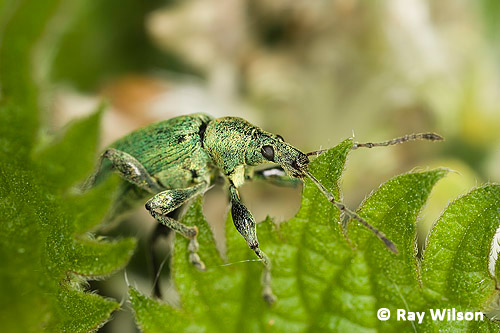
Nettle Weevil (Phyllobius pomaceus) - Cheshire, England - May 2009

Nettle Weevil (Phyllobius pomaceus) - Cheshire, England - May 2009
Another couple of examples of British broad-nosed weevils are shown below.

Gwynedd, Wales - May 2008

Cheshire, England - August 2009
As with most beetle families, the greatest diversity of species occurs in tropical rainforests, where a bewildering array of colourful and spectacular species can be found.

Manu, Peru - December 2008

Manu, Peru - December 2008
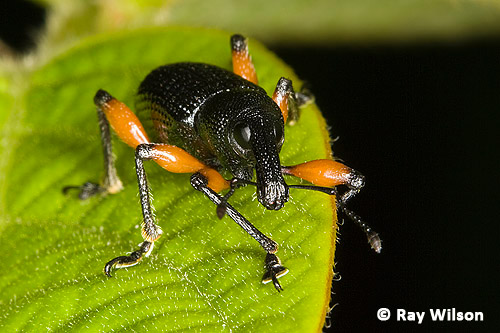
Manu, Peru - December 2008
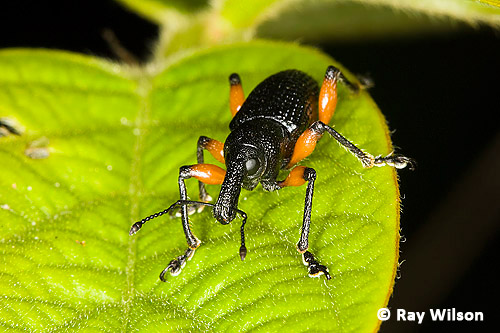
Manu, Peru - December 2008
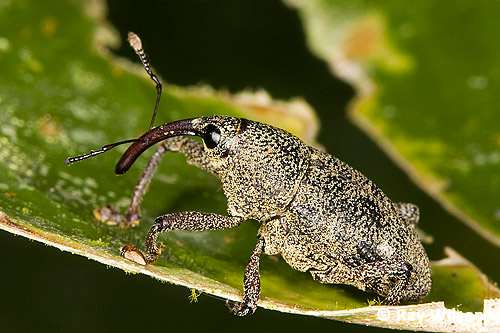
Tambopata, Peru - December 2008
Ray Wilson owns the copyright of all images on this site.
They may not be used or copied in any form without prior written permission.
raywilsonphotography@googlemail.com